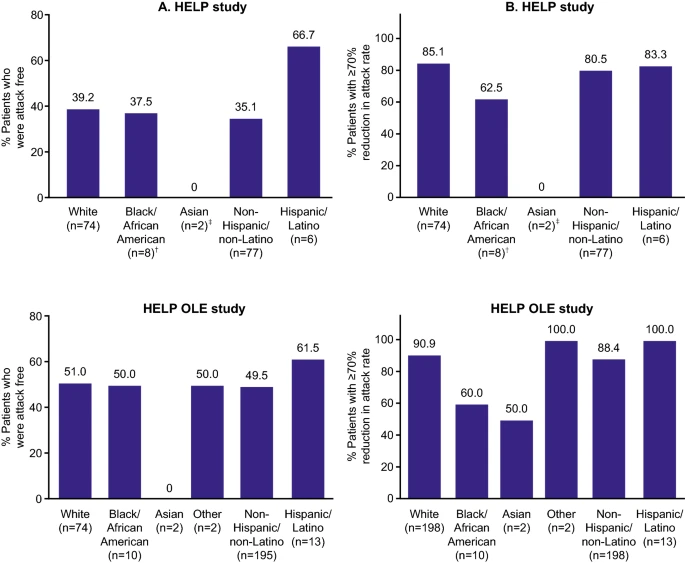Abstract
Background
The COVID-19 pandemic has highlighted disparities in healthcare, particularly in the United States, even though disparities have existed since the organization of the modern healthcare system. Recruitment of patients from racial and ethnic minority groups is often minimal in phase 3 clinical trials, and is further exacerbated in the case of trials for rare diseases such as hereditary angioedema (HAE).
This can lead to a gap in the understanding of minority patients’ experiences with these diseases and their response to potential treatment options.Methods
We reviewed data from phase 3 double-blind (HELP) and open-label extension (HELP OLE) trials of lanadelumab, a monoclonal antibody developed for long-term prophylaxis against attacks of HAE. Efficacy (attack rate reduction) and safety (adverse events) results from White patients were compared descriptively to those from Hispanic/Latino patients, Black/African Americans, and other minority Americans.
Results
Not surprisingly, few minorities were recruited across both studies: 9.5% Black, 2.4% Asian, and 7.1% Hispanic/Latino versus 88.1% White and 91.7% non-Hispanic/non-Latino received lanadelumab in HELP, and 4.7% Black, 0.9% Asian, 0.9% other, and 6.1% Hispanic/Latino versus 93.4% White and 93.4% non-Hispanic/non-Latino were enrolled in HELP OLE. Although these studies were conducted in the United States, Canada, Europe, and Jordan, all minorities were from the United States. Despite the number of minority patients being far less than expected for the population, there was no evidence that either efficacy or adverse event profiles differed between ethnic or racial groups.Conclusions
The HELP and HELP OLE studies described herein recruited far fewer minorities than would be ideal to represent these populations. However, evidence suggests that the effectiveness and tolerance of lanadelumab are similar between the groups. Nonetheless, the disparity in recruitment into research for minorities has significant room for improvement.


No comments:
Post a Comment